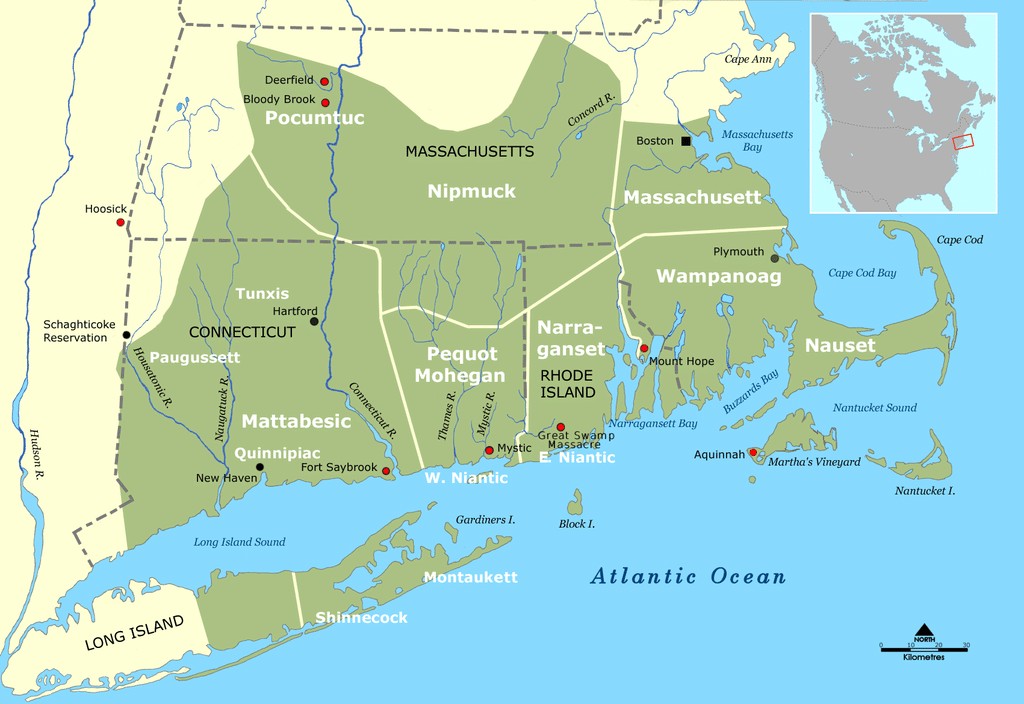The Montauk Indian Tribe was located across the Long Island Sound, which was part of Connecticut and Rhode Island Colony. and was an Algonquian-speaking tribe. They are related to the Pequot and Narragansett tribes that lived across the New England Colonies.

Montauk Indian Tribe: History
The Montauk became a wealthy Indian tribe due to their ability to use the wampum found on Long Island to make disk-shaped beads.
These beads were then used for trade or tribute payments with their neighboring tribes.
he English and Dutch settlers preferred to use these beads for trade and payment to Native Americans. This gave the Montauks much wealth and led to their tribe being raided by more powerful New England tribes.
After the Europeans arrived, the Montauk suffered a similar fate to many of the other tribes in the New World. The infectious diseases brought by the Europeans spread among them, and since their bodies did not have any natural immunity, many of them began to die from them. Their population decreased, and due to other influences, many began to relocate.
Many of the Montauk relocated to Wisconsin and became part of the Brothertown Indians movement, while some stayed around their homeland. They began to blend into citizens of the United States.
By 1879, the Long Island Rail Road was constructed on Montauk, and those that had stayed through previous generations lost their legal status and right to compensation due to the tribe being "extinct." This argument was made due to the intermarriage of Native Americans and African Americans.
It was believed that they had diluted their Indian blood and were now considered a mixed race.
The entirety of Montauk was sold in 1890 to Arthur W. Benson "subject to the rights of the Montauk Tribe of Indians," noting that a few members and their families survived.
In 1906, New York State passed legislation to enable the Montaukett to establish land claims through colonial deeds from 1660 through 1702. The 1686 Dongan Patent allowed the Montauk Proprietors to purchase the remaining unpurchased lands between the ponds and east of Lake Wyandanee (Lake Montauk), a purchase that was made in 1687.
In the early 20th century, the Montauk filed a land claims case under the 1906 legislation; it failed, and the representatives were told that the tribe was "extinct" for the purpose of making such a claim.
